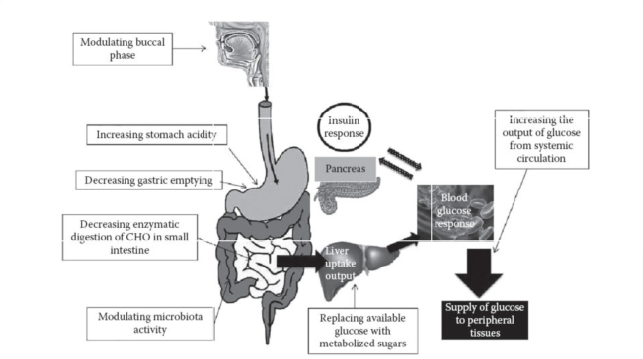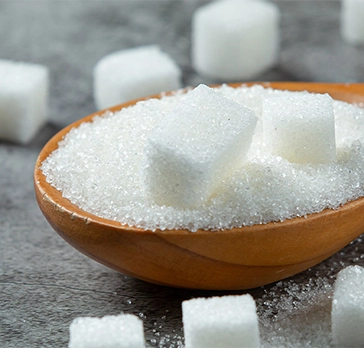GI (Glycemic Index) and GL (Glycemic Load) are easily mistaken for one another, and both are very different. In this blog, we will try to elaborate on the difference between both and how they impact our daily life.
What is GI?
Glycemic Index is a scientific determination of how quickly or slowly blood glucose, commonly called blood sugar, increases after eating any particular food. With a rating under 55, low GI foods release glucose gradually; that is what you want if your body is insulin immune or diabetic. High GI foods, measured over 70, give you an instant sugar rush, which you want if you need immediate energy to restore hypoglycemia or exertion.
Why is GI essential? Do you want to know why there is so much buzz about GI?
GI has been introduced by Otto and Niklas (1980) and then by David Jenkins, Thomas Wolever, and colleagues (1981) at the University of Toronto and designed to be in practice since then. It has been important for a country like us because of the increasing number of Diabetes patients in India and the South East Asia subcontinent.
We need to have some restricted parameters to control this, which can be used as a tool. The Glycemic index is such a mechanism that analyzes measured values of blood glucose level after intaking food. It lets us decide our food choices.
According to the International Diabetes Federation, India had 77 million diabetics in 2020: Almost 8.9% of the Indian Population, and still the numbers are rising.

How much does a consumer aware of GI?
An average consumer is not yet aware of GI /GL. This awareness is increasing gradually. So it is a need of time to be responsive to such a changing trend.
How is GI calculated?
To measure the GI of a food, a portion equivalent to 50 g carbohydrate is given to the test person. After which, the blood glucose level is measured at a finite interval. Change in blood glucose level over time is plotted in the form of a graph against time. Glucose is used as a reference food.
List of a few low GI foods
1. Kidney beans, chickpeas, and other legumes
2. Pasta
3. Muesli
4. Porridge oats
5. Apples
6. Grapefruit
7. Milk
How can GI be used?
Diabetes
Foods with a high GI value can cause a sudden rise in the sugar levels of a person and hence can put a diabetic person into some serious trouble. Therefore diabetic people must include foods with low GI value in their meals as they cause a gradual rise in the sugar levels and keep the diabetic people away from any possible harm.
Weight
If you find it hard to fight your hunger but want to shed a few kilos of weight, then low GI foods can come to serve your needs. Low GI food keeps you full for a longer time and reduces the amount of your food intake.
High endurance
Any sports person needs to have a significant level of endurance to perform better during an event, and good storage of energy can be achieved through low GI foods as they provide a consistent supply of energy to the body.
Foods with a high GI value
1. Baked potato
2. Puffed crispbread
3. Many refined breakfast cereal
Formula for GI
Glycemic Index Classification RANGE OF VALUE
LOW GI 55 or less
MEDIUM GI 56 to 69
HIGH GI 70 or more
GI of a mixed meal
Average GI= Σ (glycemic index*carbohydrate content*servings per day)/ total carbohydrates
What is GL?
Glycemic Load takes the GI number and moderates it to a more normal portion size. This is essential because most people aren’t eating the quantity of food required to make up 50g of net carbs in the GI tests.
How is GL calculated?
Glycemic Load of the Food: It is a relative measurement of the Glycemic Index for a portion of Food.
GL of Food Item =(GI of Food Item * Carbohydrates in one serving ) / 100
Glycemic Load Classification RANGE OF VALUE
LOW GL 10 or Less than 10
MEDIUM GL 11 to 19
HIGH GL 20 or More than 20
What are the inconsistencies that can occur in measuring GI/GL?
After knowing the relevance of GI and GL, we would now understand how the values of these two indices can show differences.
Both Glycemic Load and Glycemic Index are accounted useful to measure the impacts of carbohydrates and sugar on a human body, but because every human body responds differently at different amount of sugar or carbohydrate intake, there can occur a difference in the values of GI and GL within a range of 15%, and the results can turn out to be imperfect even if calculated as an average of a large group of people.
The test results of GI and GL will also vary even if there is a difference in the process of making a food item. It has been observed that the results of GI and GL vary in the two cases wherein one of the food is cooked for a longer time than the other. This creates a problem in evaluating the accurate values of GI and GL.

Limitations of using the Glycemic Index (GI) value
1. It isn’t easy to measure the GI value of the combination of food as it needs to be calculated separately to get the correct GI measurement.
2. The level of blood sugar in a human is also affected by a person’s activity, and hence the results will not be the same for everyone.
3. The nutrient density of a food is not taken into consideration while measuring the Glycemic Index.
Things to make food with low GI or GL:
1. Soluble Dietary Fiber
2. Modified Resistant Starch
3. Sugar Replacers
4. Polyols
At Gujarat Enterprise, we help manufacturers by distributing the right ingredients and information to make your food healthier and wholesome. To know more about GI or GL, contact our experts now.
Leave a Reply
Your email address will not be published. Required fields are marked *




